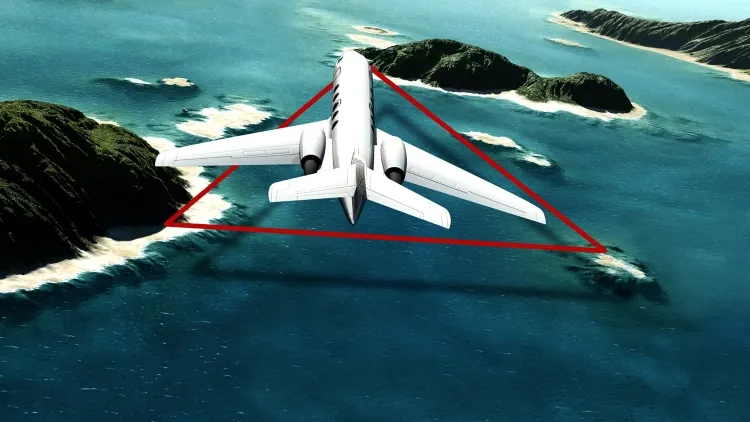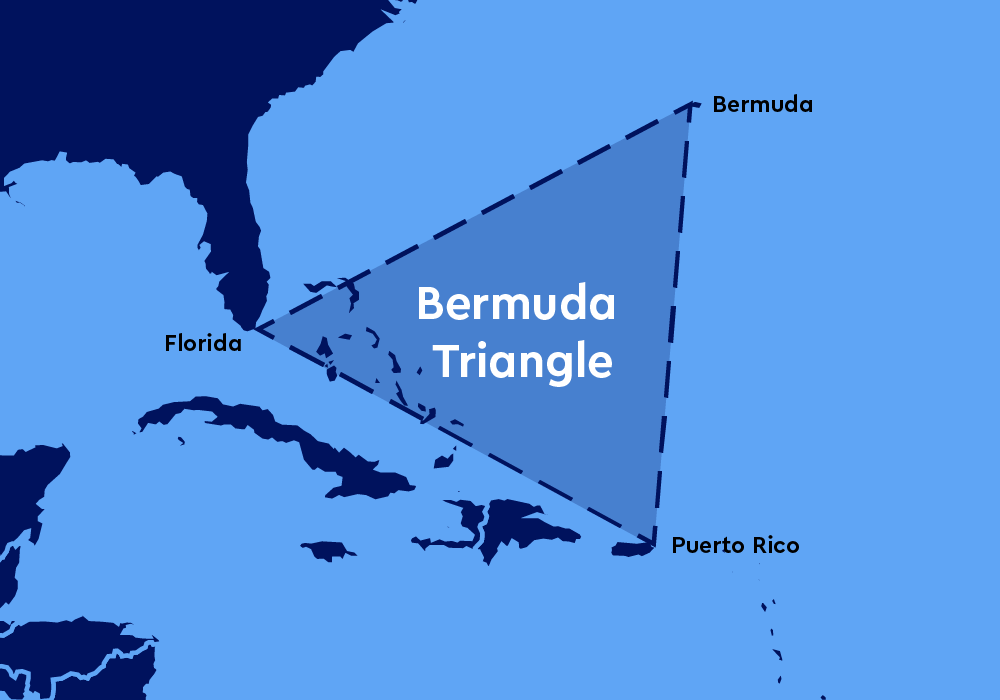Unraveling the Mystery: The Bermuda Triangle Explained...!!!
The Bermuda Triangle remains one of the modern age's most enduring mysteries. Whether viewed through the lens of science or shrouded in the intrigue of the unknown, the region continues to fascinate and puzzle.

Introduction
The Bermuda Triangle, also known as the Devil's Triangle, is a vaguely defined region located in the western part of the North Atlantic Ocean. It is marked by points in Bermuda, Florida, and Puerto Rico. This area has gained a notorious reputation due to numerous reports of inexplicable disappearances of ships and aircraft, igniting a wide range of theories and speculations.
Geographical Boundaries
Spanning approximately 500,000 square miles, the Bermuda Triangle's vertices are generally considered to be Miami (Florida), San Juan (Puerto Rico), and the island of Bermuda. The region is among the most heavily traveled shipping lanes globally, with vessels frequently crossing it for ports in the Americas, Europe, and the Caribbean islands.

History and Notable Incidents
Public attention to the Bermuda Triangle mystery began to rise in the 20th century. One of the most renowned incidents was the disappearance of Flight 19, a squadron of five U.S. Navy Avenger torpedo bombers on a training mission from Fort Lauderdale, Florida, in December 1945. The rescue plane sent to find them also vanished without a trace, adding to the mystery.
Other notable incidents include:
-
The USS Cyclops, a massive U.S. Navy cargo ship that vanished in March 1918 with 309 crew members.
-
The Mary Celeste, an American merchant brigantine discovered in 1872 abandoned in the Atlantic Ocean, with no sign of the crew.
Theories and Explanations
Various theories have been proposed to explain the enigmas of the Bermuda Triangle. Some are scientific, while others delve into the paranormal:
-
Human Error: Navigational mistakes and human errors are common explanations. The area is known for its rapidly changing weather, which can confuse even experienced pilots and sailors.
-
Compass Variations: The Bermuda Triangle is one of the few places on Earth where true north and magnetic north align, potentially causing compass malfunctions and navigational errors.
-
Methane Hydrates: Some scientists suggest that large methane hydrate deposits under the ocean floor could erupt, creating bubbles that reduce water density and cause ships to sink.
-
Rogue Waves: Massive, unexpected waves that can reach heights of up to 100 feet, capable of sinking large vessels.
-
Magnetic Anomalies: Unusual magnetic fields in the area may interfere with navigational instruments.
-
Aliens and Paranormal Activity: Speculative theories include the involvement of extraterrestrial beings and other paranormal phenomena.

Scientific Perspective
While the Bermuda Triangle has a notorious reputation, the U.S. Coast Guard and other research organizations assert that the number of incidents in the area is not significantly higher than in other heavily traveled regions. Many incidents attributed to the Bermuda Triangle can be explained by natural causes or human error.
A 2013 study by the World Wide Fund for Nature (WWF) listed the world's 10 most dangerous waters for shipping, but the Bermuda Triangle was notably absent from the list.
Cultural Impact
The Bermuda Triangle has become a staple in popular culture, inspiring numerous books, movies, and television shows. Its mysterious allure continues to captivate the imagination of people worldwide. Despite scientific explanations, the idea of a region where ships and planes vanish without a trace persists.
The Bermuda Triangle remains one of the modern age's most enduring mysteries. Whether viewed through the lens of science or shrouded in the intrigue of the unknown, the region continues to fascinate and puzzle. Although many myths and legends surrounding it have been debunked, the Bermuda Triangle endures as a symbol of the unexplained, reminding us of the vastness and unpredictability of our planet's oceans.
What's Your Reaction?

















